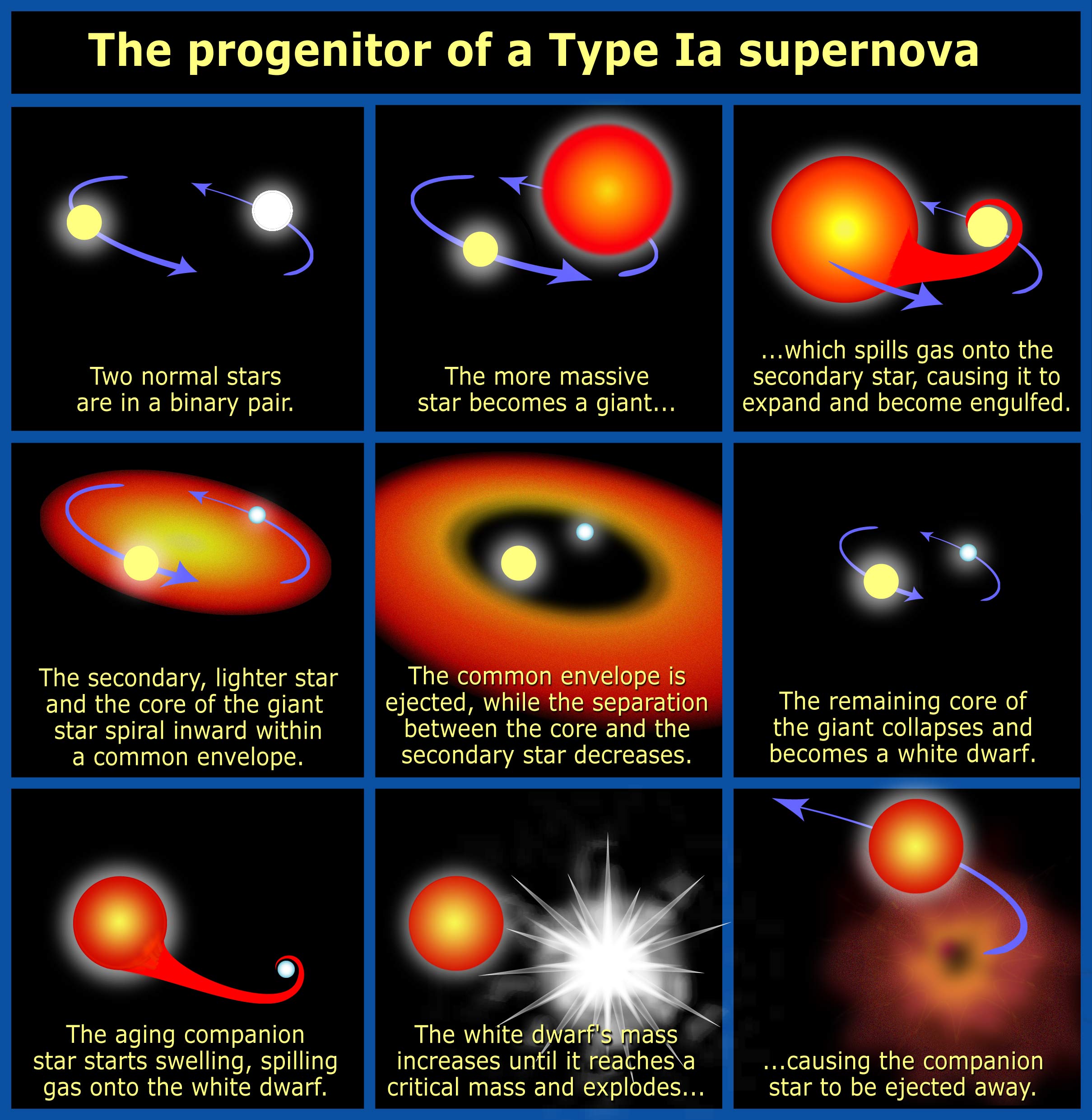
(presentation for Powell Observatory Open House, April 1, 2006)
Stars come is a vast array of masses, sizes, temperatures, and luminosities (a description of intrinsic power generation in terms of radiant energy). Stars also sport a substantial range of other interesting properties, such as their magnetic field properties, rotation speeds, and variability.
Technically, a "star" is a gaseous object that undergoes nuclear fusion of hydrogen in its core at some point. Planets are not stars. Brown Dwarfs are "failed" stars. Theory indicates that it takes a mass equivalent to at least 80 times that of Jupiter to be a star.
Some of the most exciting and extreme behaviour associated with stars comes when a star dies. The following figure provides a visual of how a star like our Sun will change over time. The next figure is a trace of these stages in a diagram that plots power of light output against the star temperature (or "color").


However, stars can expect to die to leave behind "stellar corpses" that are grouped into three basic terminal classes: white dwarf stars, neutron stars, and black holes.

These are the lesser of the extreme stars. They are not generally the remnants of stellar explosions, although they are associated with two significant explosive events. When in binary stars, atmospheric gas from the normal star can be siphoned off onto a White Dwarf. Under some conditions, this will lead to explosive events called "novae", which can be fairly bright. But under the right conditions, this mass transfer will lead to a type of supernova that is numbered amongst the brightest events in the universe (see next figure). Even in the absence of these explosive events, the White Dwarfs have surface gravities with crushingly large values of around 100,000 Earth g's.

Below are examples of White Dwarfs that have been found in a globular cluster of stars known as M4:



More exciting are the stars that really blow up. Aside from the special (but very important) case of White Dwarfs in binaries, it is only massive stars that blow up as supernovae. Such stars begin their lives around 10 times the Sun's mass or more. The remnant that they leave behind has too much mass to exist as a White Dwarf, so that gravity further constricts them, either to end as a neutron star, or if too high, to collapse entirely to a black hole.
What might a star look like before it blows up? Here is a Hubble Space Telescope image of the massive star eta Carinae. What you see is not actually the star, but gases that have been blown out from its atmosphere into space.

Here is a before and after picture of the nearest supernova to the Earth to have exploded in modern times (known as SN1987A):

And here is a time lapse of changes in the ejected gases from that explosion:

The remnant from these catastrophic explosions will be either a neutron star that is extremely compact and rapid rotating with strong magnetic fields, or a black hole. A mysterious class of objects known as Gamma-Ray Bursters (or GRBs) have captured the attention of astronomers for the last several decades. We now believe that some of these are associated with newly born neutron stars called Magnetars and some are associated with relativistically beamed radiation from black holes in supernovae.
Here is an artistic rendition of a Magnetar. Its surface magnetic field is about a million billion times stronger than the Earth's.

Black Holes continue to be a topic of considerable research in astrophysics. These seem to come in all kinds, from hypothesized mini-Black Holes to incredibly massive ones found at the centers of galaxies. The ones that are birthed in supernova explosions tend to have a matter content equivalent to a handful of Sun masses. Although we cannot see Black Holes directly (except possibly through Hawking radiation, but that is another story), astronomers infer their existence through indirect means, by virtue of how the intense gravity of black holes can influence their environment. Below is an illustration of how Black Holes can siphone mass from a normal stellar companion to form an orbiting accretion disk of gas and even a stellar jet:

The most energetic events in the universe are associated with black holes of one kind or another. Today many astronomer associate a class of supernovae with objects known as gamma-ray bursts. Shown is an image of a gamma-ray burst candidate as seen in infrared light. This burst on Dec 14, 1997 was momentarily as bright as the entire known universe!
